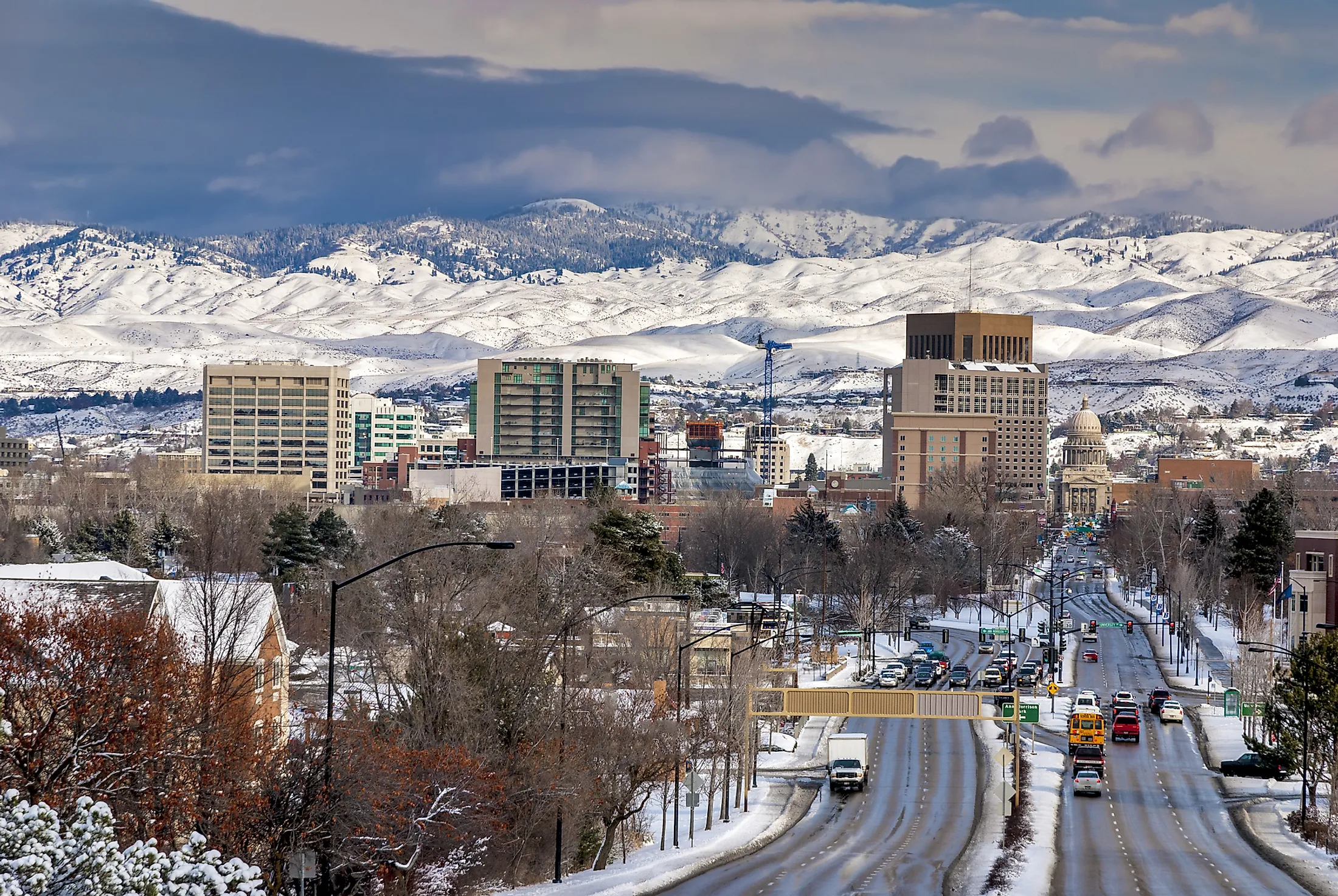
10 Coldest States In The United States
It is well-known that the United States is among the countries with a diverse range of climatic conditions. Beaches? Yes, there are many of those around here. Deserts? You also have those! Due to the existence of two main climate zones—the Continental Zone, which spans a significant part of the nation, and the Maritime Zone, which covers the east coast—the United States experiences a wide range of temperatures. The combination of latitude and the predominant winds is responsible for this zone discrepancy. Below are the ten coldest states in the US based on average temperature:
1. Alaska - 28.1°F
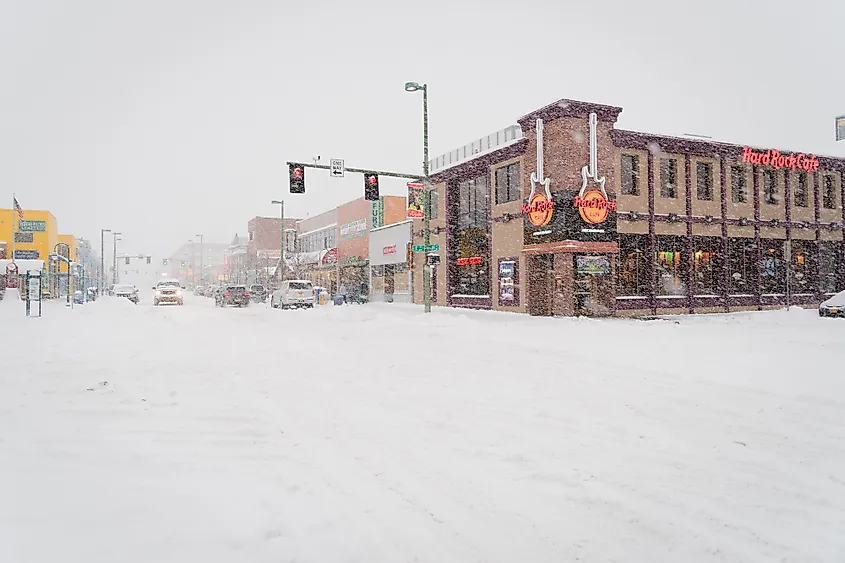
Unsurprisingly, Alaska does better than any other US state when it comes to cold weather. Situated in North America’s extreme northwestern corner, Alaska, more than any other state in the Union, has the benefit of being quite closer to the North Pole. The winters in Alaska are lengthy, icy, snowy, and partly cloudy, while the summers there are chilly and mainly cloudy. The warm season lasts for 3.7 months, where with an average high temperature of 67°F and a low temperature of 55°F, July is the year’s hottest month in the state. The cold season lasts for 4.0 months, where with an average low temperature of 13°F and a high temperature of 24°F, January is the year’s coldest month.
The severe weather patterns in Alaska are strongly influenced by ocean currents. The state’s western coast is influenced by the Alaska Current, while the state’s Arctic coast is influenced by a westward-flowing cold ocean current. The interior portions of Alaska experience a continental climate that is influenced by the strong cold winds from northern Canada and Siberia, which is responsible for the extremely cold temperatures in these areas.
2. North Dakota - 41.1°F
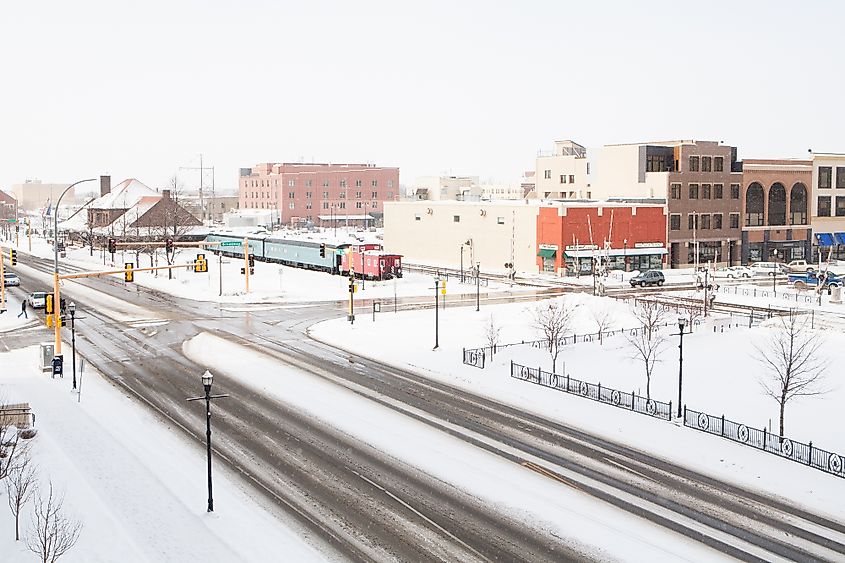
Due to its position at the farthest end of the Midwest region of the United States, North Dakota is one of the coldest areas in the entire continental United States. North Dakota experiences a continental climate with very hot summers and severely cold winters. It is to be noted that North Dakota has mostly flat terrain with very little vegetation. This makes it very convenient for the strong cold Arctic winds to move southwards into the state, resulting in extremely cold temperatures.
With an average of fifty days below freezing in the winter, the average temperature varies from 2° F in the north to 17° F in the south. The average annual rainfall and snowfall of North Dakota are 19 inches of rain and 39 inches of snow, respectively. It gets an estimated 201 sunny days per year on average. In North Dakota, the three most pleasant months of the year are June, August, and July.
3. Minnesota - 41.8°F
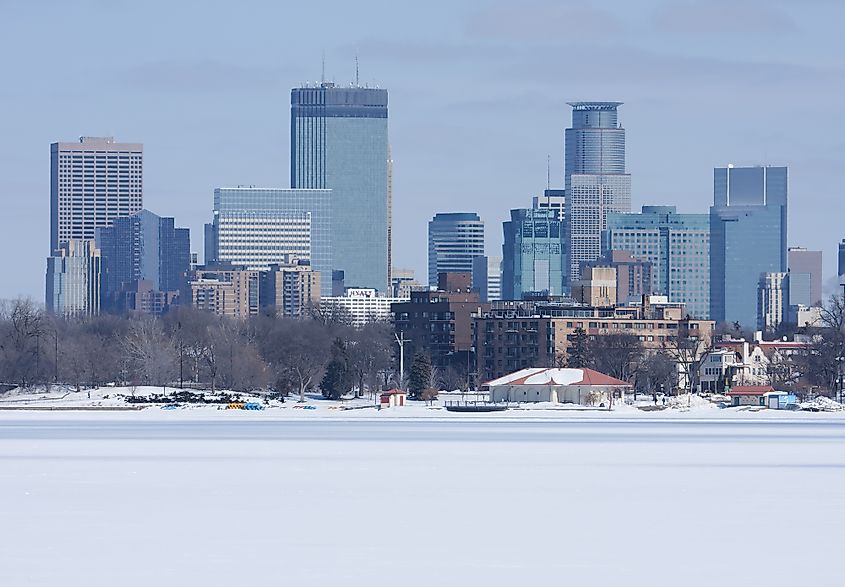
The climate of Minnesota is greatly influenced by its location in the country’s Upper Midwest region and its closeness to Lake Superior on its northeastern side. Lake Superior plays a vital role in moderating temperatures in the northern portion of Minnesota, where the winters are severely cold and long and where there are possibilities of frosts also during the summer months. Moreover, Minnesota experiences a continental climate with extremely cold winters and hot summers.
Mid-June to early September is the greatest time of year to travel to Minnesota for warm-weather activities. There are 3.9 months of warm weather with an average daily high temperature of more than 71°F. With an average high of 83°F and a low of 65°F, July is the hottest month of the year. With an average daily high temperature below 36°F, the cold season lasts about 3.3 months. January is the coldest month of the year, with an average low of 10°F and a high of 24°F.
4. Maine - 41.9°F
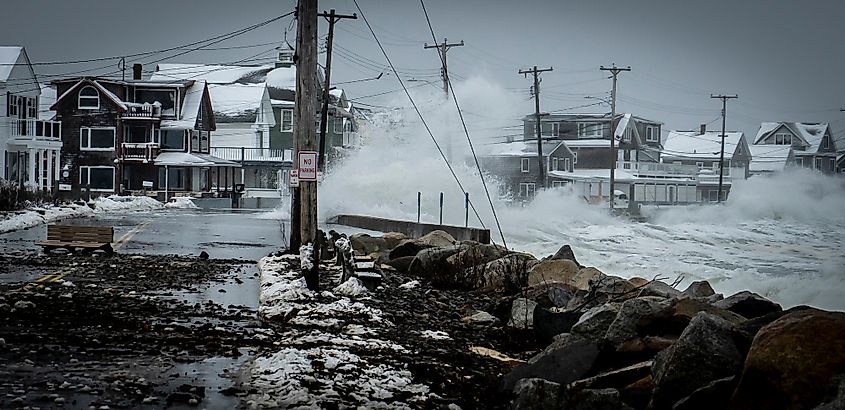
Maine experiences a humid continental climate with hot, wet summers and long, severely cold winters. The state’s northern and western portions experience much colder winters, while the temperatures in the state’s coastal areas are moderated by the Atlantic Ocean.
With an average daily high temperature exceeding 68°F, the warm season lasts for 3.9 months. In Maine, July is the hottest month of the year, with an average high of 79°F and a low of 59°F. With an average daily temperature below 34°F, the cold season lasts for 3.3 months. January has the lowest average high and low temperatures throughout the year, at 8°F and 23°F, respectively.
5. Wyoming - 42.3°F
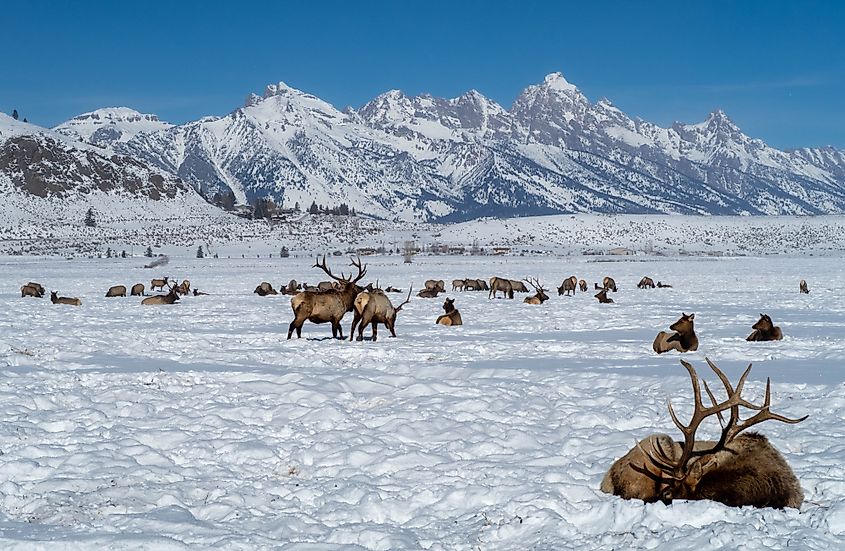
Wyoming experiences a semi-arid and continental climate with warm summers and cold winters. Wyoming witnesses greater seasonal temperature changes, and its climate is greatly influenced by the state's topography. The state’s highlands and mountainous areas receive about 200 inches of snowfall, while the lowlands get about 50 inches of snow. Additionally, the Chinook winds lead to quite warm temperatures in some areas.
January is the coldest month and July is the hottest in the state. Rarely does the temperature fall below 14°F or rise over 94°F. The full month of June and the period from mid-August to late-September are the ideal times of year to travel to Wyoming for warm-weather activities.
6. Montana - 42.6°F
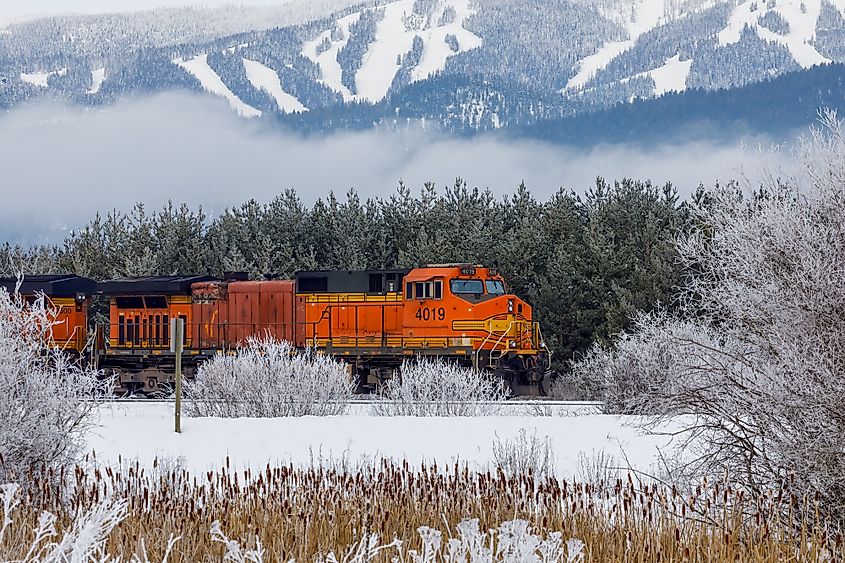
The climate in Montana is greatly influenced by its topography. The state’s eastern portion consists of plains, Badlands, and isolated mountain ranges experiencing a semiarid continental climate with severely cold winters. The Continental Divide does not allow the warmer air from the Pacific to flow eastwards and the dry continental air to move westwards. Therefore, the area located to the west of this divide experiences a Pacific coastal climate, with cool summers and mild winters.
The short, warm, and mainly clear summers in Montana contrast with the frigid, snowy, and occasionally foggy winters. December is the coldest and July is the hottest month in the state. Rarely does the temperature fall below -8°F or rise over 94°F. Early July through mid-August is the ideal time of year to travel to Montana for warm-weather activities.
7. Vermont - 43.2°F
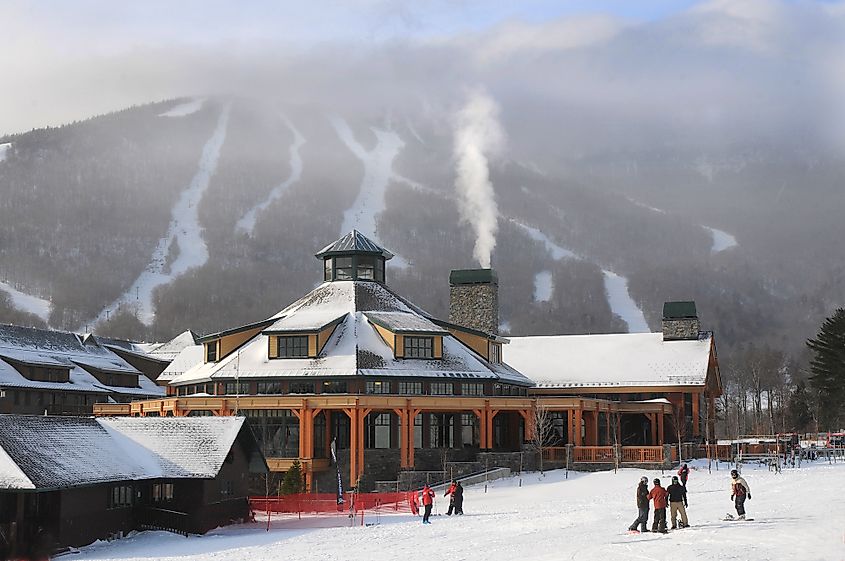
Vermont experiences a humid continental climate with mild summers and snowy winters. The cold winds from the Arctic regions greatly influence the winter temperatures of Vermont.
3.7 months of the year are considered the warm season, with daily maximum temperatures typically exceeding 70°F. The hottest month of the year is July, which has an average daily high temperature below 38°F with a range of 81°F to 62°F. With an average low of 14°F and a high of 29°F, January is the coldest month of the year. Mid-June to mid-September is the greatest time of year to travel to Vermont for warm-weather activities. With an annual snowfall of 89.25 inches, Vermont is also the snowiest state in the United States.
8. Wisconsin - 44°F
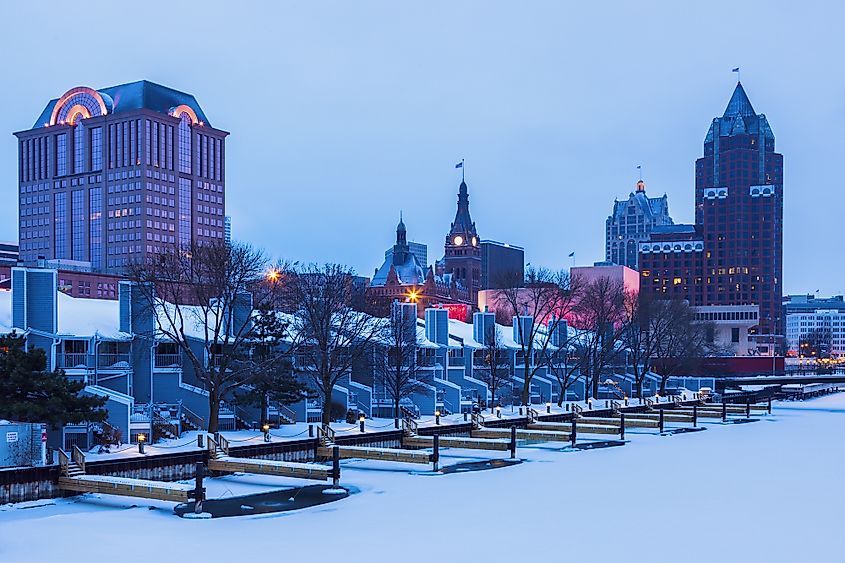
The climate of Wisconsin is greatly influenced by Lake Superior and Lake Michigan, which bound parts of the state on two sides. The long, snowy, and freezing winter experienced by the state is because of the influence of these two Great Lakes. The state’s northern and western portions receive about 160 inches of snowfall, whereas the rest of the state gets around 40 inches of snowfall.
The coldest month of the year is January, with an average low of 14°F and a high of 28°F. The hottest month of the year is July, with an average high of 82°F and a low of 63°F. Mid-June to early September is the greatest time of year to travel to Wisconsin for warm-weather activities.
9. Idaho - 44°F
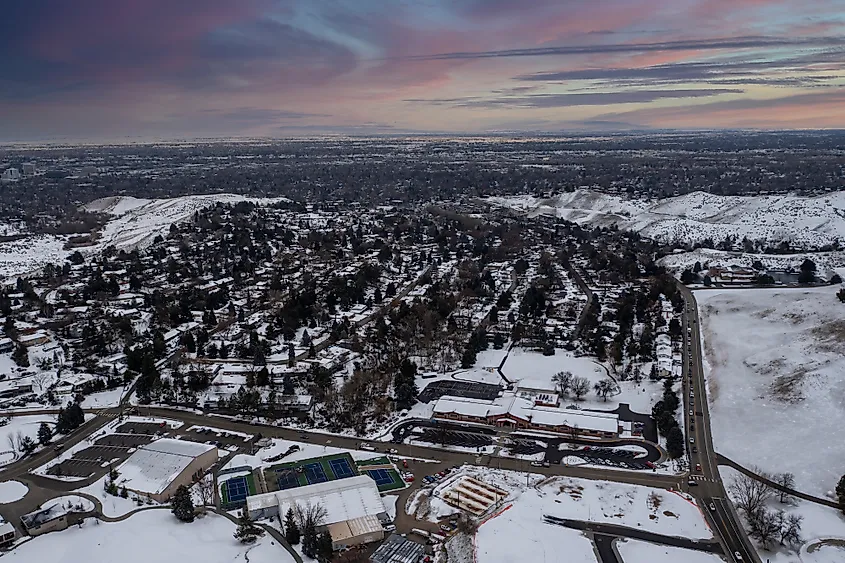
Even though the western boundary of Idaho is about 530km away from the Pacific Ocean, Idaho’s climate still witnesses maritime influence during the winter months. The maritime influence moderates the winters in Idaho. However, the maritime influence is not much prominent in the state’s eastern portion, which experiences a semi-arid continental climate with much extreme seasonal temperature differences.
With an average high of 92°F and low of 62°F, July is the hottest month of the year, and January is the coldest with an average low of 25°F and high of 38°F. Late June to early September is the ideal time of year to visit Idaho for warm-weather activities.
10. New Hampshire - 44.2°F
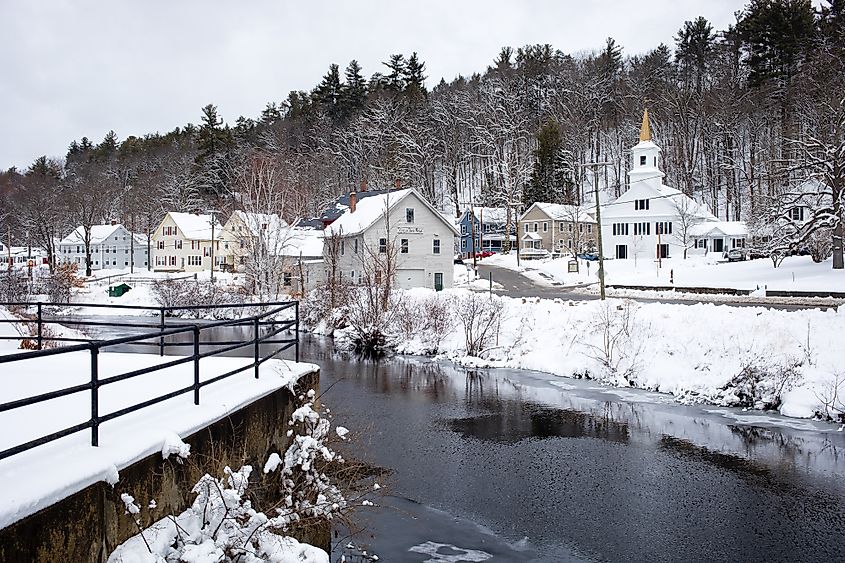
With warm, wet summers and very cold, snowy winters, New Hampshire has a humid continental climate. The Atlantic Ocean greatly moderates the climate of the state’s southeastern part, which experiences mild winters, whereas the state’s northern and mountainous areas that receive the cold winds from the Arctic experience severe cold temperatures. New Hampshire receives an average yearly snowfall that ranges from 150cm to more than 250cm.
The coldest month of the year is January, with an average low of 21°F and a high of 34°F. The warmest month of the year is July, with an average high of 79°F and a low of 63°F. Late June through mid-September is the ideal time of year to visit New Hampshire for warm-weather activities.
Even if these ten states are among the coldest in the US, winter is all about discovering the most incredible places, so make sure to travel to all of them. For tourists, each of these states offers a variety of winter attractions throughout the year. So, make use of the US winters.
| Rank | State | Average temperature (in Fahrenheit) |
|---|---|---|
| 1 |
Alaska |
28.1 |
| 2 |
North Dakota |
41.1 |
| 3 |
Minnesota |
41.8 |
| 4 |
Maine |
41.9 |
| 5 |
Wyoming |
42.3 |
| 6 |
Montana |
42.6 |
| 7 |
Vermont |
43.2 |
| 8 |
Wisconsin |
44 |
| 9 |
Idaho |
44 |
| 10 |
New Hampshire |
44.2 |
| 11 |
Michigan |
45.3 |
| 12 |
South Dakota |
45.8 |
| 13 |
New York |
46.1 |
| 14 |
Colorado |
46.3 |
| 15 |
Washington |
47.4 |
| 16 |
Oregon |
48 |
| 17 |
Iowa |
48.4 |
| 18 |
Massachusetts |
48.9 |
| 19 |
Utah |
49.3 |
| 20 |
Nebraska |
49.5 |
| 21 |
Pennsylvania |
49.6 |
| 22 |
Connecticut |
50 |
| 23 |
Rhode Island |
50.8 |
| 24 |
Nevada |
51.1 |
| 25 |
Ohio |
51.8 |











